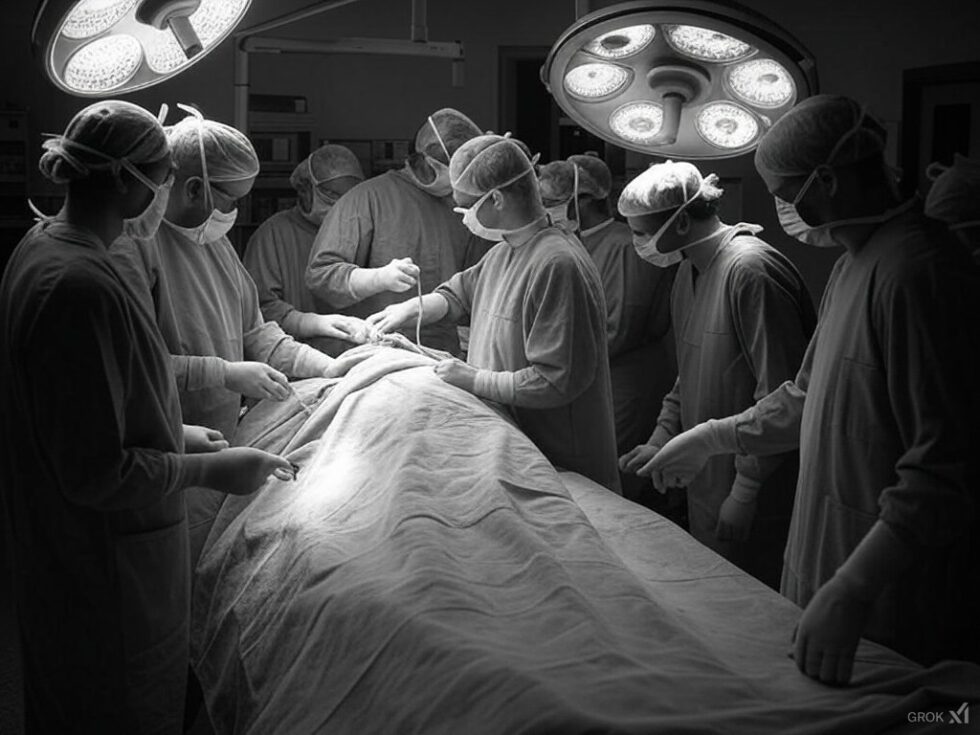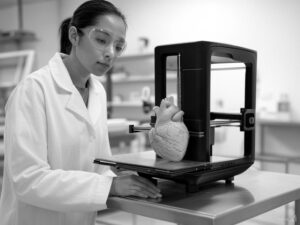
In 2042, the world experienced a technological revolution that transformed medicine and human longevity. This monumental change began with the groundbreaking discovery of a bio-ink capable of printing fully functioning human organs. The ink, a sophisticated blend of stem cells, growth factors, and biomaterials, was developed by Dr. Elena Vasquez, a visionary scientist renowned for her work in regenerative medicine. Her innovation not only promised to save lives but also redefined what it meant to be human.
The first successful 3D-printed organ was a heart, meticulously crafted in a Zurich laboratory. The recipient, a 12-year-old girl named Amara, had been on the transplant list for years, with her condition worsening daily. When news broke that Amara had not only survived the surgery but was thriving, the world watched in awe. This was no longer science fiction; it was a new reality.

As the technology spread, hospitals worldwide began adopting 3D organ printing, leading to profound implications. Patients no longer had to endure the agonizing wait for a donor match, and ethical dilemmas surrounding organ donation and the black market trade in human organs began to fade into history. Humanity now had the tools to combat organ failure on a massive scale.
However, as with all significant advancements, there were unforeseen consequences. The immediate impact was overwhelmingly positive. Survival rates for organ failure soared, and the average human lifespan increased. People who had resigned themselves to a life of illness found new hope, and the elderly began to live longer, healthier lives. The world stood on the brink of a new era of human potential.
Yet, the societal implications of this newfound longevity soon became apparent. As people lived longer, healthier lives, the global population began to swell. Resources, already stretched thin, became even scarcer. Governments scrambled to adapt, implementing policies to manage the burgeoning population. Urban areas, already densely packed, grew more crowded, leading to a housing crisis that spurred innovation in vertical farming and sustainable living spaces.
The economic landscape also shifted. Industries that had relied on the inevitability of aging and death faced turmoil. The insurance industry, in particular, faced a reckoning as the actuarial tables that had guided them for decades became obsolete. Retirement as a concept evolved; people no longer retired at 65 but continued working well into their 80s and 90s, reshaping the workforce and the very notion of career longevity.
Not everyone embraced this new world. A movement emerged, led by those questioning the morality of extending life indefinitely. Philosophers, ethicists, and religious leaders engaged in heated debates about the implications of playing god with human life. Were we meant to live forever, or was there inherent value in the natural cycle of life and death? These questions sparked a global conversation about the essence of humanity and the limits of scientific intervention.
Meanwhile, the technology continued to advance. Researchers began experimenting with enhancements, not just replacing failing organs but improving them. Athletes sought these enhancements to gain an edge, sparking controversy in the world of sports. The line between human and machine began to blur as people opted for organs that could outperform their natural counterparts.
Over the decades, society gradually adapted to this new normal. The initial chaos gave way to a more balanced approach to life extension. Policies were enacted to ensure fair resource allocation, and new ethical guidelines were established to govern the use of organ printing technology. Humanity had taken a giant leap forward, but not without challenges.
Ultimately, the ability to 3D-print fully functioning human organs became a testament to human ingenuity and resilience. It served as a reminder that with great power comes great responsibility. The world had changed irrevocably, but in embracing this change, humanity found a way to preserve the essence of what it means to be human: the capacity to adapt, innovate, and dream of a better future.




